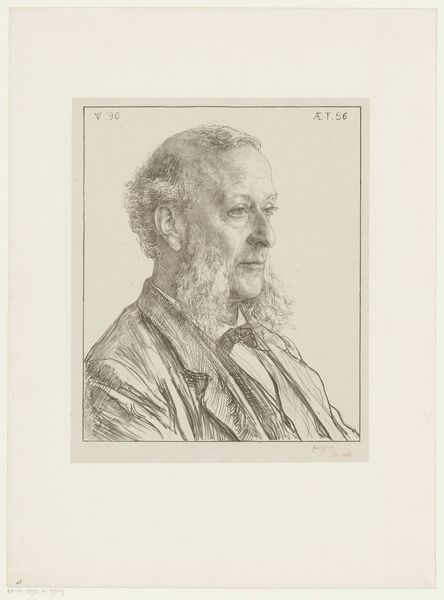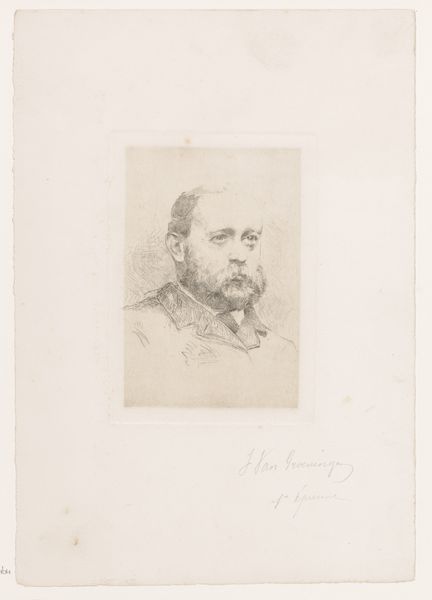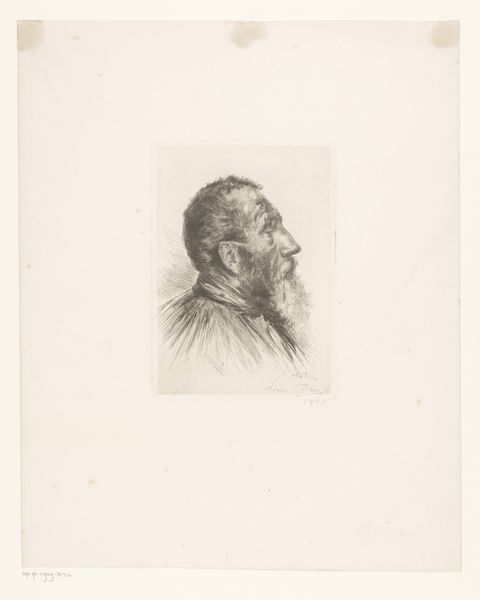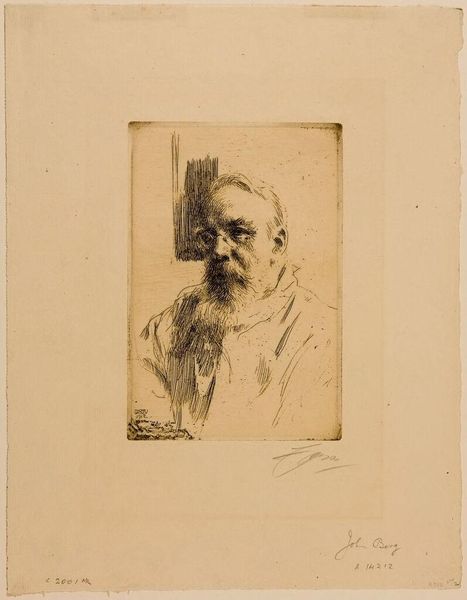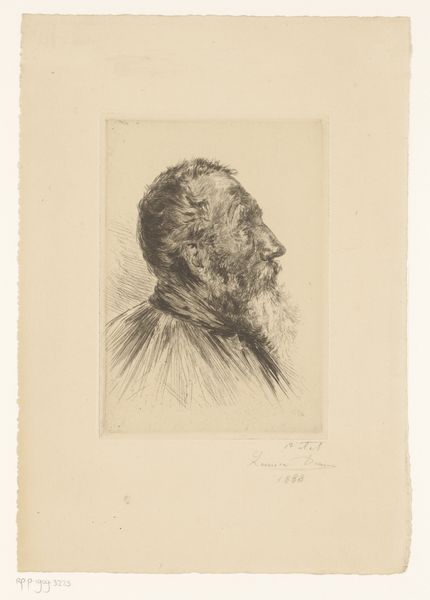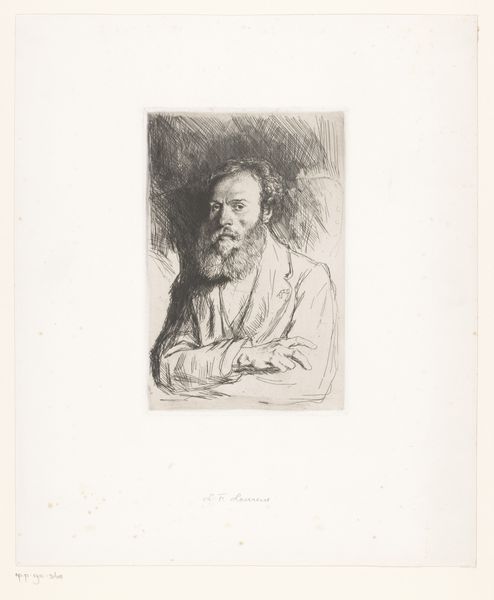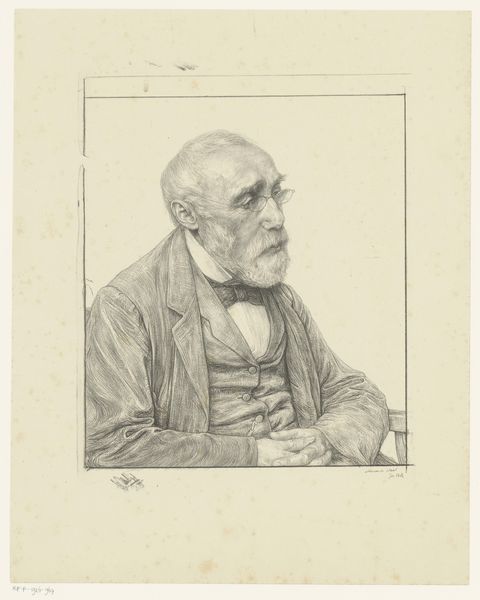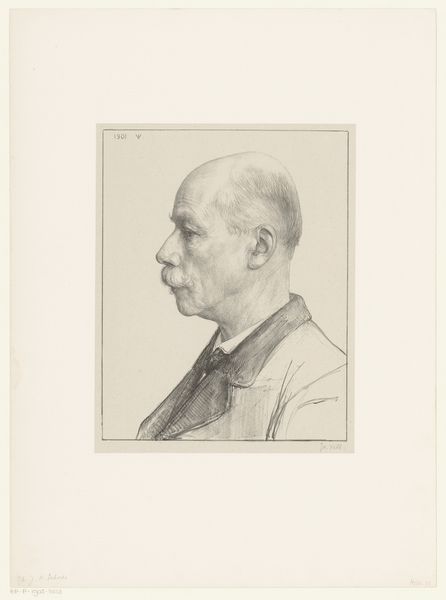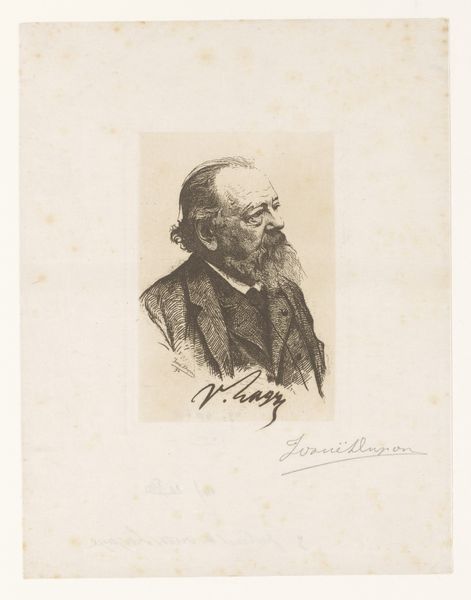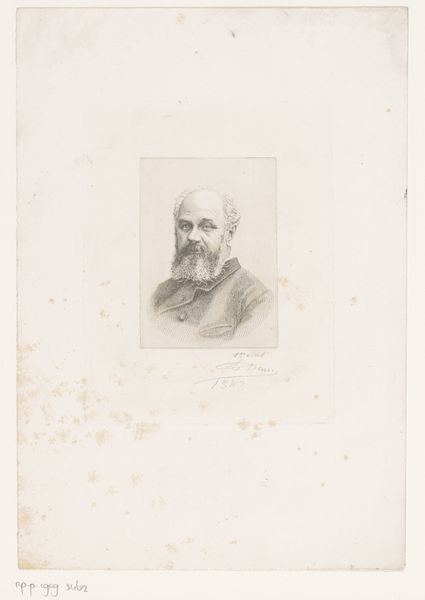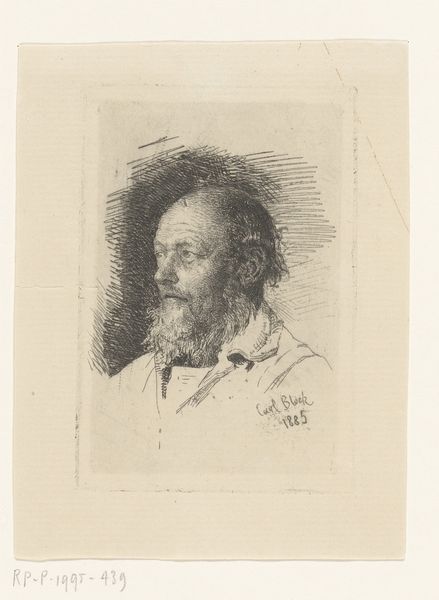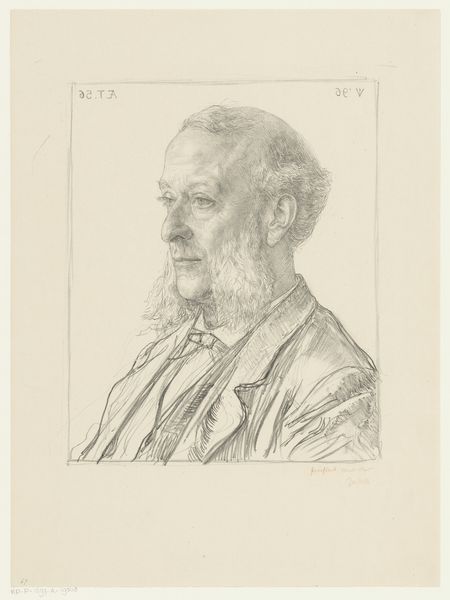
#
pencil drawn
#
photo of handprinted image
#
light pencil work
#
photo restoration
#
shading to add clarity
#
pencil sketch
#
old engraving style
#
pencil drawing
#
limited contrast and shading
#
pencil work
Dimensions: height 214 mm, width 160 mm
Copyright: Rijks Museum: Open Domain
Curator: I'm struck by the vulnerability in this portrait; it feels surprisingly modern for something created in 1896. There's a gentleness I didn't expect. Editor: Indeed! We’re looking at Jan Veth’s “Portret van Albert Cornelis Vreede,” held here at the Rijksmuseum. Vreede, a notable Dutch historian and linguist, is rendered in delicate pencil work. What initially captivates me is the way Veth captures Vreede's thoughtful introspection. The soft lines around his eyes suggest a life lived in contemplation, almost like peering into one’s memories. Curator: And it's framed, literally, within that severe rectangular border! The face itself breaks out of the convention by being shown in profile, not head-on. The composition, which feels old-fashioned, in effect enhances Vreede's presence rather than restricting it. He seems poised to step right out of it and into a direct conversation! Editor: I find the details so compelling. His beard, for instance. It's not just a beard; it’s a wispy symbol of wisdom and time. Consider the cultural weight beards held in the late 19th century—a marker of intellect, respectability, and a connection to tradition. It's like Veth isn't just sketching a man, but rather an emblem of a scholarly age. The use of line reminds me of woodblock printing but the result is softer. Curator: Absolutely. And in Dutch culture at that time, the role of the intellectual was deeply tied to national identity and the shaping of historical narratives. Vreede's dedication to language and history positioned him as a guardian of Dutch heritage. And portraits were like enshrining, embedding people into the consciousness of a culture. Editor: I also notice the artist’s signature nestled discreetly, almost shyly, to the right. Curator: Almost as if to avoid distracting from the real subject – Vreede, the man and the mind. Jan Veth seemed quite skilled at capturing not just likeness, but a certain emotional tenor in his subjects. This resonates with the idea that the best portraits capture something enduring about the human spirit, it carries an essence of cultural identity. Editor: Yes, and the image really captures a transitional moment—the twilight of old-world intellectualism meeting a burgeoning modern sensibility. Curator: Well, it’s fascinating how Veth's sketch provides so much to interpret—beyond just a simple depiction of a man with an interesting beard. It is truly is a window into a specific time, into how people valued knowledge, dignity, and public life.
Comments
No comments
Be the first to comment and join the conversation on the ultimate creative platform.
